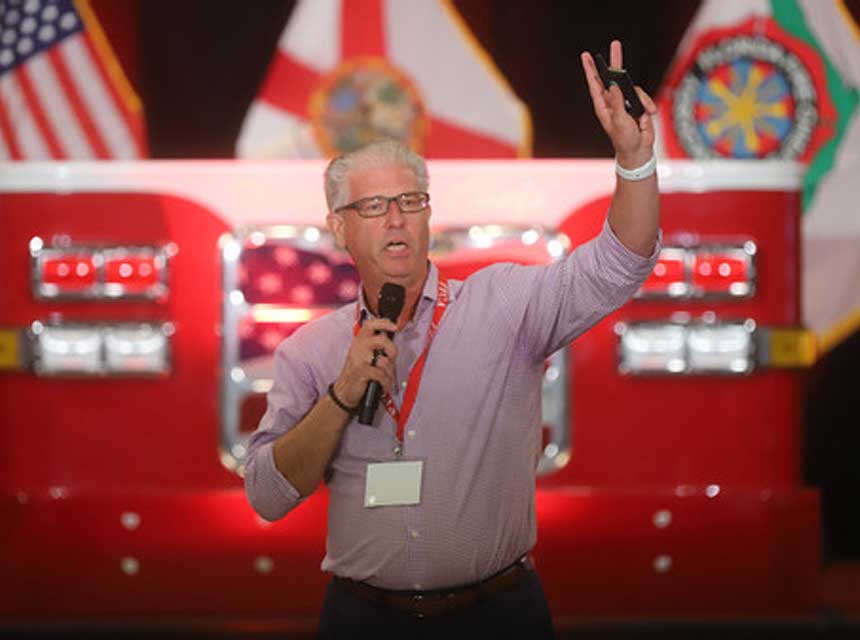
I recently had the honor of co-presenting with Dr. Lori Moore-Merrell, formerly of the International Association of Firefighters and now chief executive officer of the International Public Safety Data Institute, at the 2021 Florida Fire Chief’s Association Executive Development Conference in Panama City Beach, Florida. The topic was “Transformational Leadership Issues During Turbulent Times.” Certainly there appears to be consensus that the past year has brought widespread environmental turbulent times, including a global pandemic, civil unrest, political strife, and economic hardships.
With adversity comes opportunity, it has been said. Timothy P. Flynn, chairman of KPMG, has commented: “today’s environment represents and opportunity to transform an organization. While the current environment is unsettling and very difficult, it does present a once in a generation opportunity for leaders to examine every aspect of their business model.” Forbes Magazine has suggested that during turbulent times leaders should have a heightened focus on the health of their people, seize the unexpected advantages that troubling times trigger, and seize on the turbulence as a sense of urgency for lasting change of the status quo.
These doctrines of opportunity provide for a leadership transformation period to make lasting change to change the dynamic of continuing leading causes of fire service deaths and disabilities. While we have made tremendous inroads addressing fireground deaths from inhalation, burns, and collapse, we continue to suffer a scourge of largely preventable deaths and disabilities from cancer, cardiovascular death and behavioral health impairment and suicide.
Occupational cancer continues to be found at higher rates in firefighters than general population and mortality continues to be elevated as well. To combat this requires a leadership-driven transformation that must take deep seated roots in all organizations through the fire service and its more than one million members. Advocacy and education are a large part of the solution. It must include adherence to strict personal protective and respiratory protection. We must have an “all hands on deck” approach to immediate decontamination, including skin wipes and wash down, gear decontamination and isolation, and we must accomplish this in a timely manner. Knowing that the skin is a large organ and pores become enlarged with heat and exertion, allowing chemicals to be absorbed rapidly, we must be quick when it comes to decontaminating our skin and with a heightened sense of urgency. Additionally, there remains the expectation that gear manufacturers provide us enhanced protections from carcinogenic materials.
Finally, focusing on enhanced early detection physical exams affords us an excellent opportunity to provide enhanced screening relative to the elevated risk of cancer firefighters compared with the general population. It is also important to note that the U.S. Preventative Health Task Force guidelines are specific to general population risk, not elevated occupational risk.
Cardiovascular events continue to plague the fire service, comprising nearly 50 percent of on-duty deaths, with the rate of non-fatal events being even higher. It has also been reported by Dr. Denise Smith that nearly 80 percent of firefighter cardiac deaths had a combination of underlying coronary disease. Additionally, in one line-of-duty death (LODD study, nearly 60 percent of the LODD firefighters were obese. Implementing enhanced early physicals allows for early detection and managing of preventable risks, these include cardiac echo and baseline CT calcification scoring. Additionally, it’s essential to stress and provide fitness support and expectations as well as lifestyle modification support, including nutritional support.
In both of these occupational threats, the need to address modifiable lifestyle factors such as sleep hygiene, nutrition counseling, and enhanced functional fitness are all key components to making a cultural shift.(www.feedingamericasbravest.com)
Lastly, the fire service should address behavioral health by taking a page from the United States Army in implementing Master Resilience Training. This involves providing all of our members the tools to adapt and overcome from adversity. Implementing this requires transformation leadership support. This includes having robust peer support programs and trained behavioral support specialists/clinicians. These are vital pieces to addressing healthy coping mechanisms to the stressors faced by first responders.
The time is upon the fire service and its leadership for bold and decisive change to address root causes and adopt cultural, preventative, human risk reduction strategies and enhanced early detection to effect a sustainable, long-term reduction of occupational deaths and disability.

Todd J. LeDuc, MS, CFO, FIFirE, retired after nearly 30 years as assistant fire chief of Broward County, Florida, an internationally accredited career metro department. He served as chief strategy officer for Life Scan Wellness Centers, a national provider of comprehensive physicals and early detection exams. He has served as a member of the International Association of Fire Chief’s Safety, Health & Survival Section for over a decade and is currently secretary of the section. He is a peer reviewer for both professional credentialing and agency accreditation. He is editor of Surviving the Fire Service (Fire Engineering Books) and serves on numerous advisory boards and publications. He can be contacted at Todd. LeDuc@lifescanwellness.com.
MORE
Obesity in the Fire Service: A Tale of Two Camps of Firefighters

